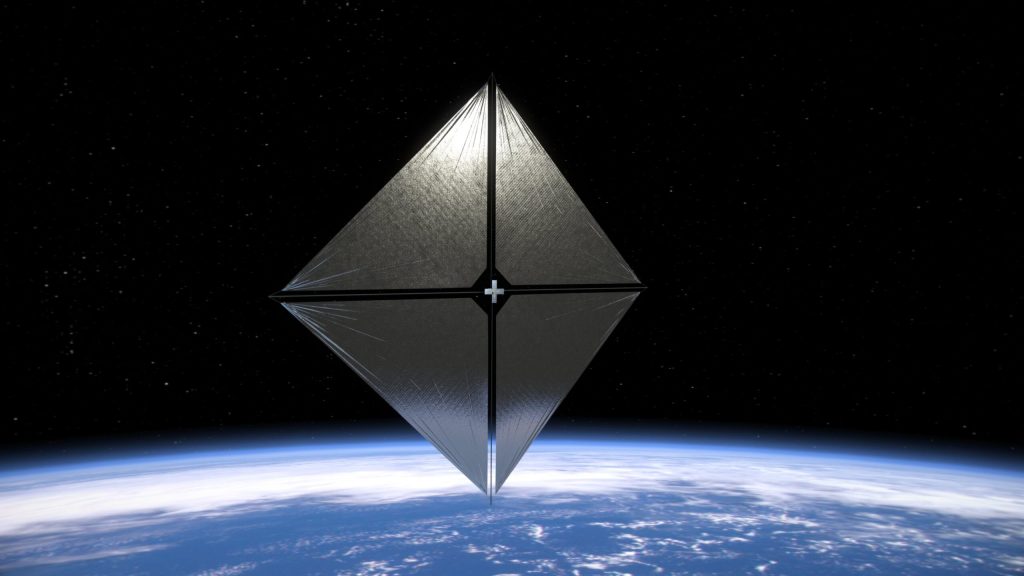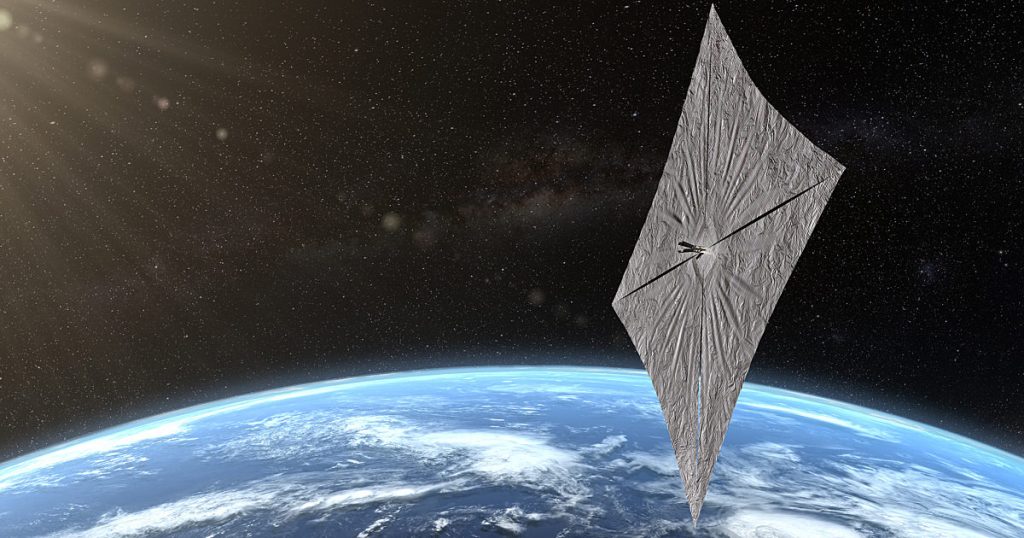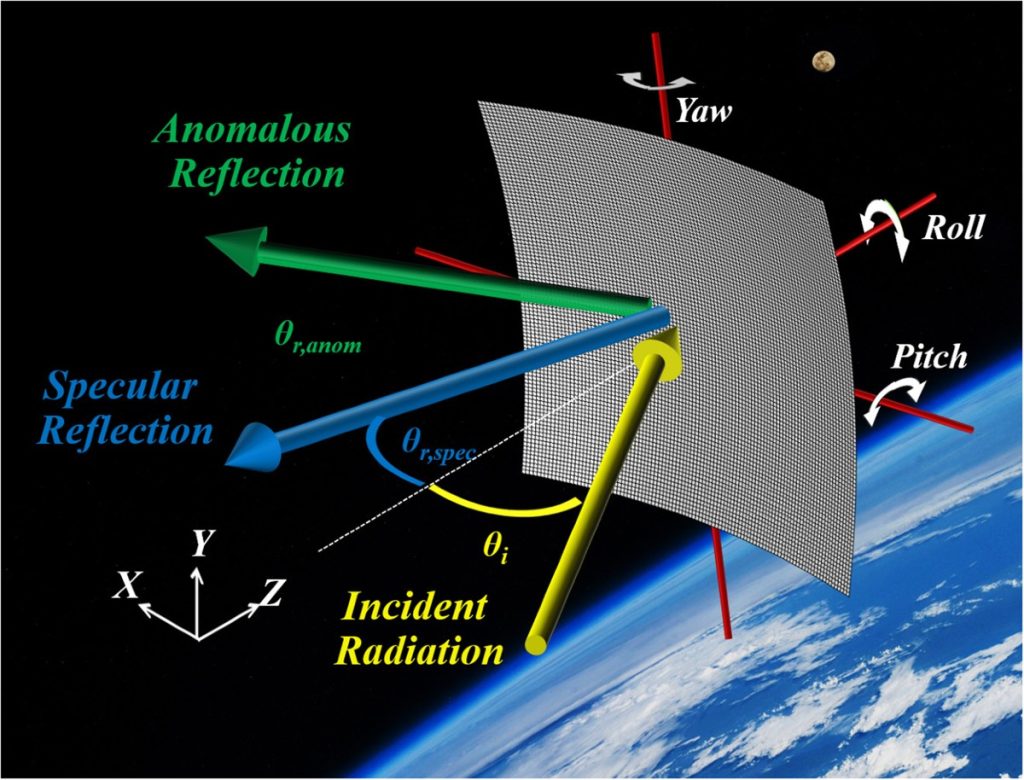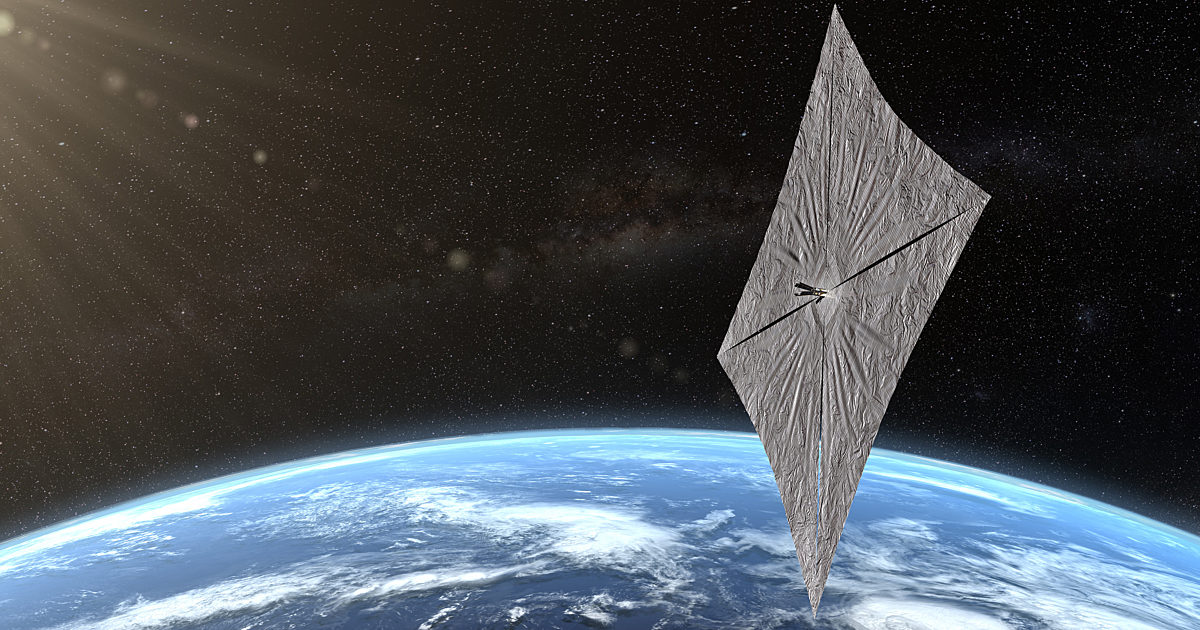For centuries, humanity has dreamed of traveling beyond our solar system, exploring distant stars, and unlocking the mysteries of the universe. However, traditional propulsion methods—rockets powered by chemical fuels—are not only costly but also extremely inefficient for deep-space travel.
Enter solar sails, an innovative technology that could revolutionize space exploration by harnessing the power of sunlight to propel spacecraft. But how do solar sails work? Could they really take us to other star systems? And what are the challenges and possibilities of this futuristic propulsion method?
In this article, Spaceyv.com explores the science behind solar sails, their current applications, and how they could pave the way for interstellar travel.
What Is a Solar Sail?
A solar sail is a spacecraft propulsion system that uses light—specifically, photons from the Sun—to generate thrust. Unlike conventional rockets that rely on combustion, solar sails move forward by absorbing and reflecting sunlight, much like how wind pushes a sailboat across the ocean.
How Do Solar Sails Work?
- Photon Pressure: Light may not have mass, but it has momentum. When photons from the Sun hit the reflective surface of a solar sail, they transfer their momentum, causing the sail to move forward.
- Continuous Acceleration: Unlike rockets that burn fuel and then coast, solar sails experience a small but constant acceleration as long as they are exposed to sunlight. Over time, this allows them to reach extremely high speeds.
- No Fuel Required: Since solar sails rely entirely on sunlight, they don’t need fuel, making them highly efficient for long-duration space missions.

Key Components of a Solar Sail System
- The Sail – A large, thin, and highly reflective surface made from lightweight materials like Mylar or graphene.
- Spacecraft Payload – The instruments or equipment carried by the sail.
- Attitude Control System – Used to adjust the angle of the sail to maximize thrust or change direction.
- Laser Boosters (Future Concept) – High-powered lasers on Earth or in space could be used to push solar sails even farther and faster.
The Advantages of Solar Sails
Solar sails offer several benefits that could make them a game-changer for space travel:
1. Unlimited Fuel Supply
Since solar sails are powered by light, they don’t require onboard fuel, making them ideal for long-duration missions where carrying fuel would be impractical.
2. Continuous Acceleration
Unlike rockets, which burn fuel quickly and then slow down, a solar sail keeps accelerating as long as it remains in sunlight. Given enough time, it could reach incredible speeds, potentially surpassing any traditional spacecraft.
3. Cost-Effective
Rocket launches are extremely expensive due to fuel and engineering costs. Solar sails eliminate the need for fuel, significantly reducing mission expenses.
4. Ideal for Deep-Space Exploration
Because they can accelerate continuously, solar sails could be the perfect propulsion system for interstellar missions, reaching destinations that would take traditional spacecraft thousands of years.

Challenges of Solar Sails
Despite their promising potential, solar sails also face significant challenges:
1. Weak Initial Thrust
Solar sails provide very low thrust compared to rocket engines. This means they take a long time to build up speed and are not suitable for rapid takeoffs or missions requiring high acceleration.
2. Large Size Requirement
To be effective, a solar sail needs to be extremely large. Some proposed designs suggest sails that are kilometers wide, which presents challenges in manufacturing, deployment, and control.
3. Space Debris and Damage
A solar sail is extremely thin and lightweight, making it vulnerable to micrometeorites and space debris. A small impact could cause severe damage to the sail.
4. Limited Maneuverability
Unlike rockets, which can change direction using thrust vectors, solar sails rely on adjusting their angle to sunlight, which limits their ability to make quick maneuvers.
Current and Future Solar Sail Missions
Although solar sails were once considered a science-fiction concept, several successful missions have demonstrated their real-world feasibility.
1. IKAROS (2010, JAXA)
The IKAROS mission, launched by the Japan Aerospace Exploration Agency (JAXA) in 2010, was the first spacecraft to successfully deploy and operate a solar sail in interplanetary space. It demonstrated controlled solar sailing and provided valuable data for future missions.
2. LightSail 2 (2019, The Planetary Society)
Funded by private donations and spearheaded by The Planetary Society, LightSail 2 became the first spacecraft to demonstrate orbit raising using only sunlight. It proved that solar sailing could be used for small-scale propulsion.
3. NASA’s NEA Scout (Upcoming)
NASA’s Near-Earth Asteroid Scout (NEA Scout) will use a solar sail to navigate toward an asteroid, demonstrating how solar sails can be used for deep-space missions.
4. Breakthrough Starshot: Interstellar Travel (Future Concept)
Perhaps the most ambitious solar sail project to date, Breakthrough Starshot aims to send tiny spacecraft to Proxima Centauri, the closest star system to Earth. The plan involves using powerful Earth-based lasers to push a fleet of ultra-light solar sails to speeds of up to 20% the speed of light, reaching Proxima Centauri in just 20 years instead of thousands!

Could Solar Sails Take Us to Other Star Systems?
One of the greatest challenges in space exploration is the vast distances between stars. Even traveling at the speed of the fastest spacecraft ever built (Voyager 1, 17 km/s), it would take over 70,000 years to reach the nearest star.
Why Solar Sails Are a Game-Changer
- They eliminate the need for carrying heavy fuel loads.
- They can reach very high speeds given enough time.
- They could be boosted by lasers to accelerate even faster.
The Future of Interstellar Travel
If solar sail technology continues to advance, we could one day see interstellar probes exploring exoplanets in other star systems. Future missions may involve:
- Laser-powered solar sails reaching near-light speeds.
- Autonomous solar sail fleets exploring different parts of the galaxy.
- Human-rated solar sail missions for long-term deep-space travel.
Final Thoughts: The Dawn of a New Space Age
Solar sails represent one of the most promising and innovative propulsion systems for the future of space travel. While they are not yet capable of carrying humans, they offer a sustainable, efficient, and cost-effective solution for robotic exploration of our solar system and beyond.
With missions like LightSail 2, NEA Scout, and the ambitious Breakthrough Starshot, we are on the verge of a new era in space exploration—one that could eventually take us beyond our solar system and into the vast unknown of interstellar space.
At Spaceyv.com, we remain dedicated to bringing you the latest updates on space technology, interstellar travel, and the future of human exploration beyond Earth.
What Do You Think?
Do you believe solar sails could be the key to interstellar travel? What are the biggest challenges we need to overcome? Let us know in the comments! 🚀



